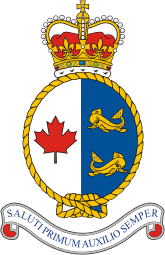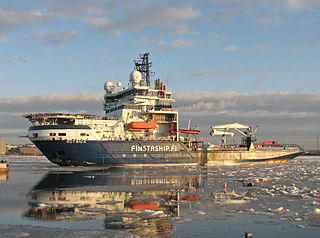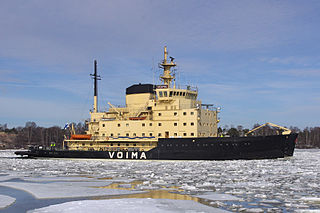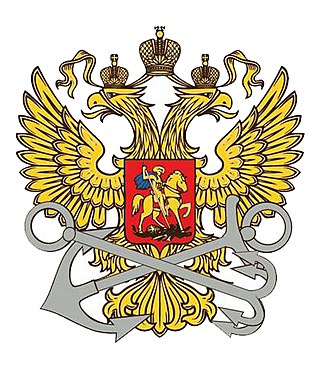
A coast guard or coastguard is a maritime security organization of a particular country. The term embraces wide range of responsibilities in different countries, from being a heavily armed military force with customs and security duties to being a volunteer organization tasked with search and rescue without law enforcement authority. In most countries, a typical coast guard's functions are distinct from those of the navy and the transit police, while in certain countries they have similarities to both.

The Canadian Coast Guard is the coast guard of Canada. Formed in 1962, the coast guard is tasked with marine search and rescue (SAR), communication, navigation, and transportation issues in Canadian waters, such as navigation aids and icebreaking, marine pollution response, and support for other Canadian government initiatives. The coast guard operates 119 vessels of varying sizes and 23 helicopters, along with a variety of smaller craft. The CCG is headquartered in Ottawa, Ontario, and is a special operating agency within Fisheries and Oceans Canada.

The Northern Sea Route (NSR) is a shipping route officially defined by Russian legislation as lying east of Novaya Zemlya and specifically running along the Russian Arctic coast from the Kara Sea, along Siberia, to the Bering Strait.

The Maritime Safety Administration of the People's Republic of China is a government agency which administers all matters related to maritime and shipping safety, including the supervision of maritime traffic safety and security, prevention of pollution from ships, inspection of ships and offshore facilities, navigational safety measures, administrative management of port operations, and law enforcement on matters of maritime safety law. It was also responsible for marine accident investigation. It is headquartered in Dongcheng District, Beijing.

Ice class refers to a notation assigned by a classification society or a national authority to denote the additional level of strengthening as well as other arrangements that enable a ship to navigate through sea ice. Some ice classes also have requirements for the ice-going performance of the vessel.

Tarmo is a Finnish steam-powered icebreaker preserved in the Maritime Museum of Finland in Kotka. Built in 1907 by Sir W.G. Armstrong, Whitworth & Co Ltd in Newcastle upon Tyne, United Kingdom, she was the third state-owned icebreaker of Finland and the last Finnish steam-powered icebreaker to remain in service. When Tarmo was decommissioned in 1970, a decision was made to preserve the vessel as a museum ship. After a long wait in Helsinki, Tarmo was towed to Kotka and completely restored in the early 1990s.
NSW Maritime, the trading name of Maritime Authority of New South Wales, was an agency of the Government of New South Wales, Australia responsible for marine safety, regulation of commercial and recreational boating and oversight of port operations. The Authority had responsibility for marine incident investigation, including the causes of incidents involving shipping and commercial vessels and breaches of State or Commonwealth navigation laws. Incidents involving Sydney Ferries vessels are examined by the Office of Transport Safety Investigations, which is also responsible for investigations into incidents involving publicly owned rail and bus transport. The Authority was also responsible for property management of submerged lands in Sydney Harbour, Newcastle Harbour, Botany Bay and Port Kembla, and for providing strategic advice on ports and maritime matters to the NSW Government.

Estonian Maritime Academy of Tallinn University of Technology is a vocational university in Estonia. It is one of the schools of Tallinn University of Technology and it is the only educational institution in Estonia that offers professional higher education and Master’s level education in the maritime field. The university is located in the capital Tallinn but also has two centres in Saaremaa. In addition to higher education, the school contributes to research, provides training and offers services. The Academy also holds a one of a kind Simulator Centre and has a whole dedicated floor of hi-tech laboratories.

Arctech Helsinki Shipyard was a Finnish shipbuilding company that focused primarily on icebreakers and other icegoing vessels for arctic conditions.

MSV Botnica is a multipurpose offshore support vessel and icebreaker built by Finnyards in Rauma, Finland, in 1998. She was the newest and technically most advanced state-owned icebreaker of Finland until 2012, when she was sold to the Port of Tallinn for 50 million euro. Botnica is used as an escort icebreaker in the Baltic Sea during the winter months, but carries out subsea and offshore construction works worldwide during the open water season.

Suur Tõll is an Estonian steam-powered icebreaker preserved in the Estonian Maritime Museum in Tallinn. She was originally built for the Russian Empire in 1914 by AG Vulcan in Stettin, Germany, as Tsar Mikhail Feodorovich. In 1917, she was taken over by the Bolsheviks and renamed Volynets. However, in 1918 she was captured by Finland and served as Wäinämöinen until 1922, when she was handed over to Estonia according to the Treaty of Tartu and renamed Suur Tõll. When Estonia was occupied by the Soviet Union in 1940, the icebreaker rejoined the Soviet fleet and was again named Volynets. She remained in service until 1985.
A Wasser- und Schifffahrtsamt is a federal German agency, responsible for the administration of federal navigable waters and for the regulation of vessel traffic.
The Danish Maritime Authority is the agency of the Danish Government responsible for regulating and administrating Danish maritime affairs. The Danish Maritime Authority (DMA) is part of the Ministry of Industry, Business, and Financial Affairs. The Agency consists of the central authority and eight vision offices, including the office in Nuuk and the Centre for Maritime Health on Fanø. Its headquarters are in Korsør.

MSV Nordica is a Finnish multipurpose icebreaker and offshore support vessel. Built in 1994 by Finnyards in Rauma, Finland, and operated by Arctia Offshore, she and her sister ship Fennica were the first Finnish icebreakers designed to be used as escort icebreakers in the Baltic Sea during the winter months and in offshore construction projects during the open water season.

Voima is a Finnish state-owned icebreaker. Built by Wärtsilä Hietalahti shipyard in Helsinki in 1954, she was the first icebreaker in the world to be equipped with two bow propellers and generated widespread publicity that helped the Finnish shipbuilding industry to become the world leader in icebreaker design.

The Federal Agency for Maritime and River Transport (Rosmorrechflot), native name: Федеральное агентство морского и речного транспорта is a federal executive body in Russian Federation. It is entrusted to manage state property, maintain transport security-related tasks and provide services in the field of maritime and inland waterway transport. It is under the jurisdiction of the Ministry of Transport of the Russian Federation.

The State Service of Maritime and River Transport of Ukraine is an agency of the Ukrainian government under the Ministry of Infrastructure whose activities are aimed at implementing state policy in the field of sea and river transport of merchant shipping, navigation on inland waterways, navigation and hydrographic support of navigation, as well as in the field of safety in sea and river transport.
Estonian Transport Administration is a governmental agency that operates within the area of government of the Ministry of Economic Affairs and Communications of Estonia. It is tasked with planning the mobility of people and water, air and land vehicles, and ensuring safe and environmentally sustainable infrastructure.


















